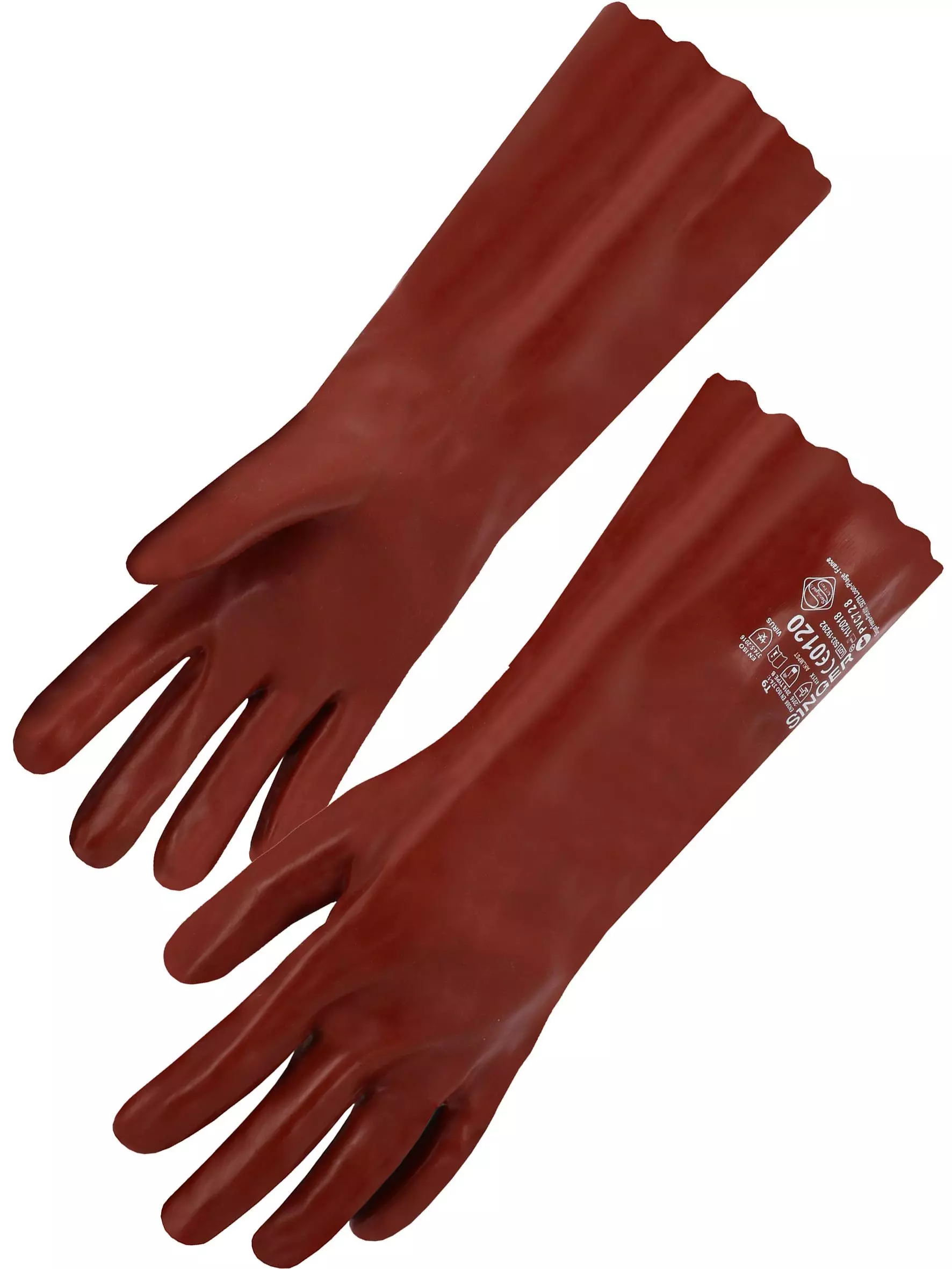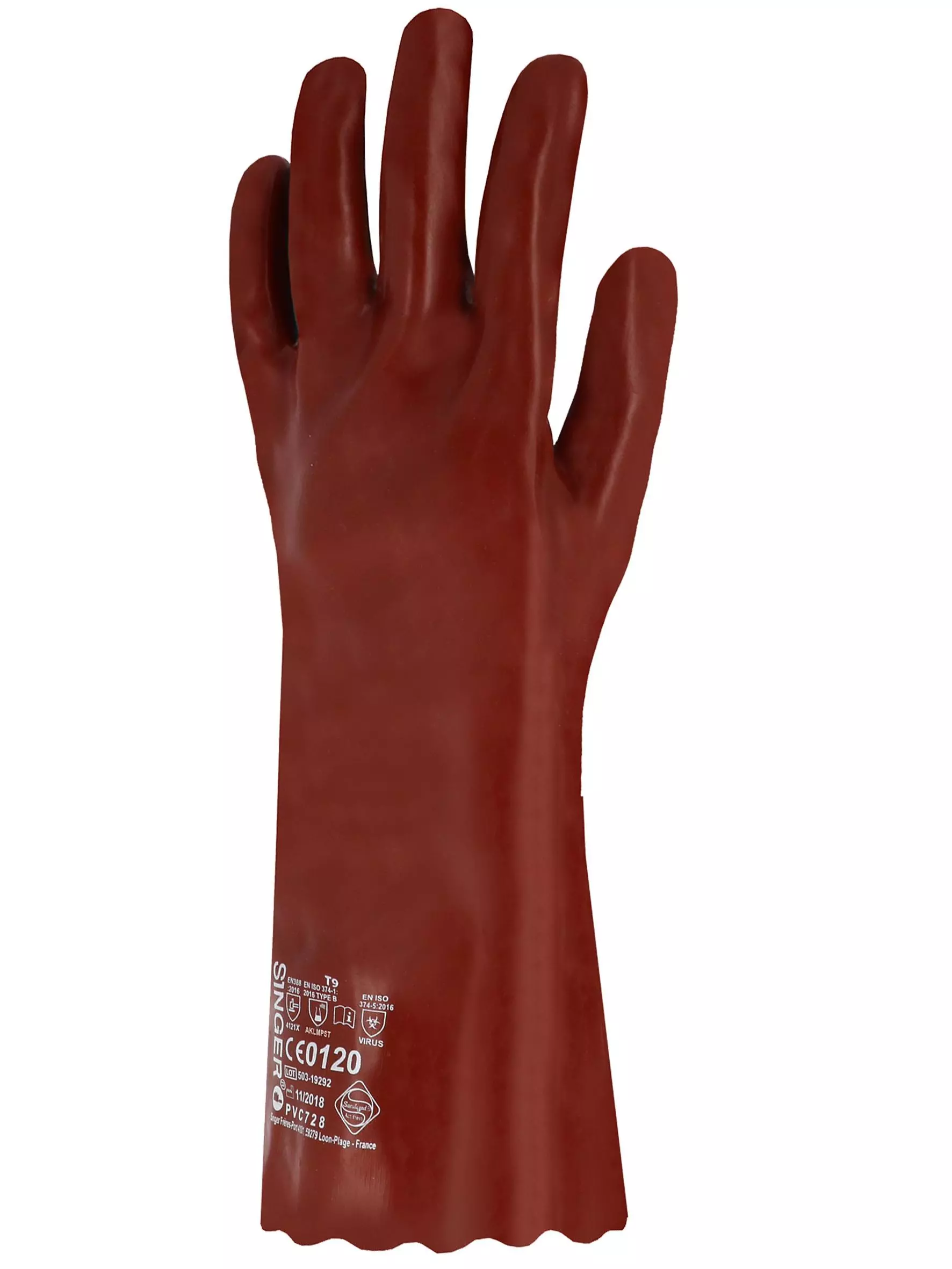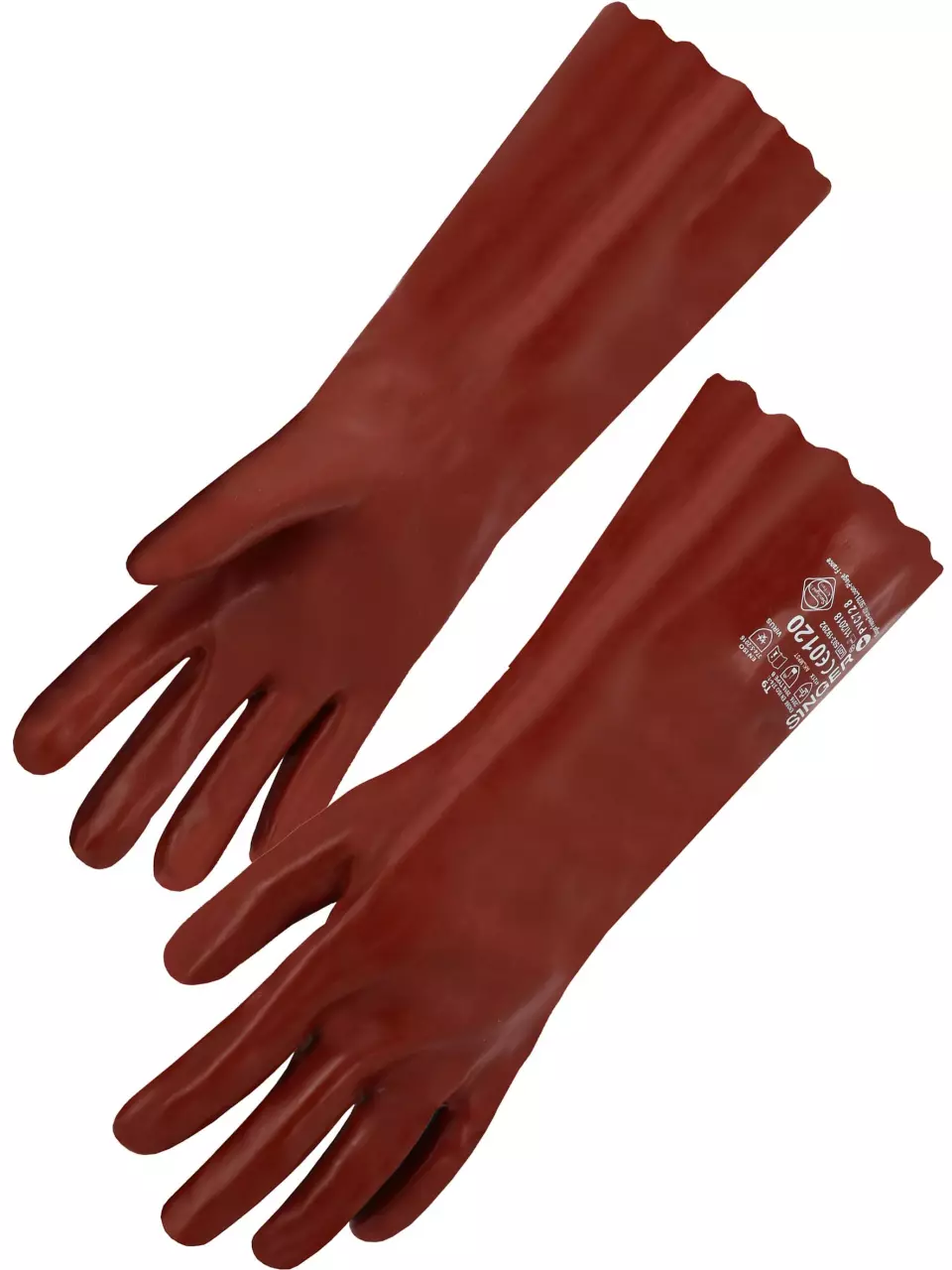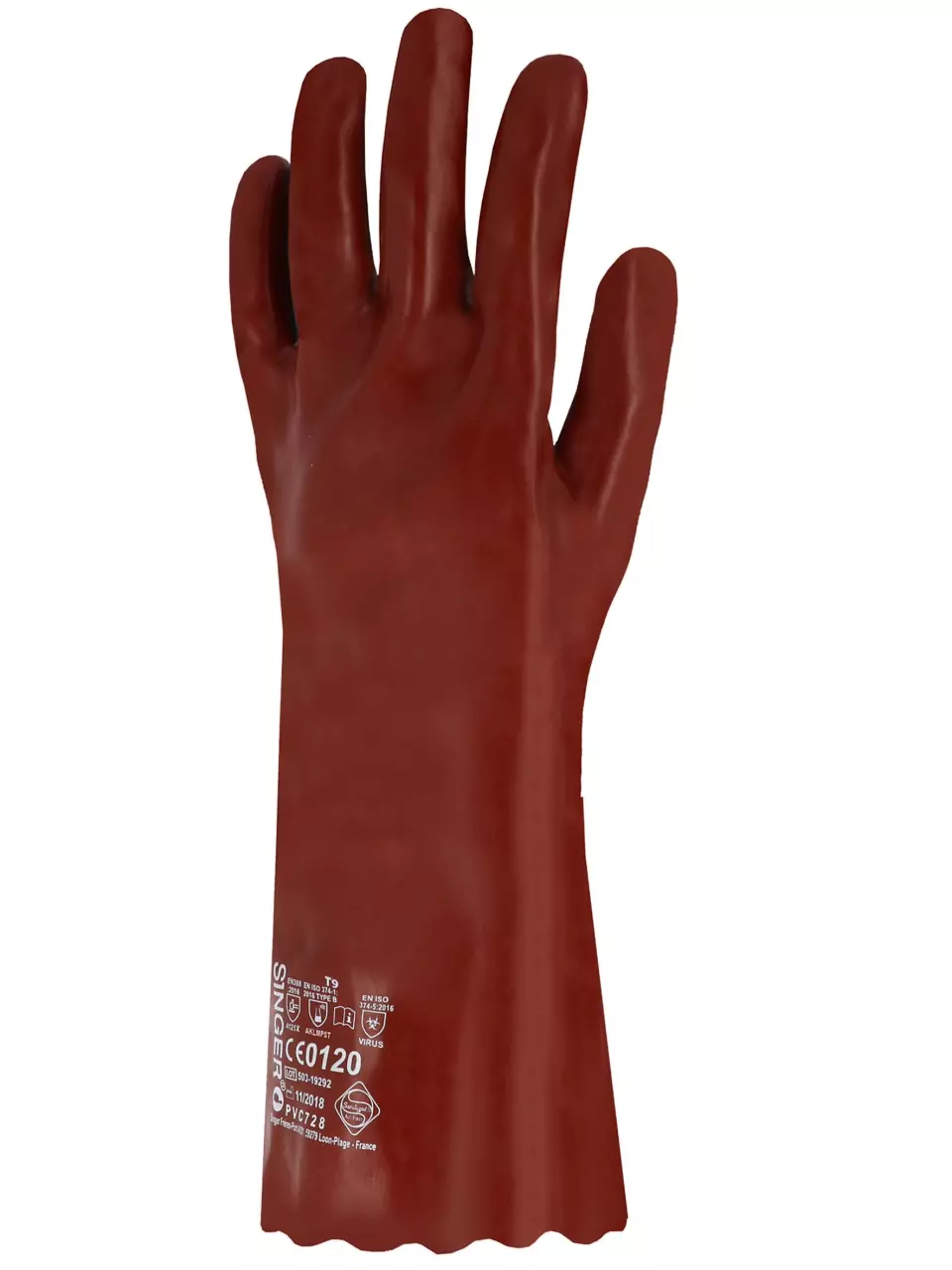


Features You'll Love

Cuff Style · Open
Determines how the glove secures around the wrist, affecting fit, protection from debris, and ease of putting gloves on and taking them off.

Glove Features · Extra Long
Extended cuff provides superior forearm protection from splashes, chemicals, and abrasions, keeping you safer and more confident.

EN 388 · Abrasion Resistance Level 4, Tear Resistance Level 2, Puncture Resistance Level 1
Offers the highest level of protection against intense rubbing and wear from rough materials.
Offers moderate resistance against snagging or catching on rough objects, preventing small rips from growing.
Provides basic protection against punctures from blunt objects like splinters, not sharp points like needles.
Singer Safety
PVC Chemical Resistant Gloves, 400 mm, Red, 10 pairs
PVC Chemical Resistant Gloves, 400 mm, Red, 10 pairs
4.8 / 5
45,64 €
Price per 10 pairs
4,56 € / pair
Choose size
Shipping fee is 7,95 € for orders under 80,00 €
Features You'll Love

Cuff Style · Open
Determines how the glove secures around the wrist, affecting fit, protection from debris, and ease of putting gloves on and taking them off.

Glove Features · Extra Long
Extended cuff provides superior forearm protection from splashes, chemicals, and abrasions, keeping you safer and more confident.

EN 388 · Abrasion Resistance Level 4, Tear Resistance Level 2, Puncture Resistance Level 1
Offers the highest level of protection against intense rubbing and wear from rough materials.
Offers moderate resistance against snagging or catching on rough objects, preventing small rips from growing.
Provides basic protection against punctures from blunt objects like splinters, not sharp points like needles.
Product description
These professional chemical protection gloves feature a fully coated PVC construction with a comfortable cotton interlock liner. Designed for superior chemical resistance against multiple hazardous substances (Type A - AKLMPST), they provide comprehensive protection against viruses, bacteria, and fungi. The gloves offer excellent mechanical protection with 4121X rating, combining durability with comfort through the cotton liner that effectively absorbs perspiration.
Product Features:
- Cotton interlock liner with cut/sewn construction for comfort
- Fully coated PVC with smooth exterior finish for excellent chemical resistance
- Zigzag edge at wrist for secure fit
- Antibacterial Sanitized® treatment for improved hygiene
- Virus-proof according to EN 374-5:2016
Technical Details:
- Type A chemical protection (AKLMPST) per EN ISO 374-1:2016+A1:2018
- Mechanical protection rating 4121X per EN 388:2016+A1:2018
- Compliant with EN ISO 21420:2020 general requirements
- Category III Personal Protective Equipment (EU 2016/425)
- Certified by SATRA (notified body n°2777)
Recommended Applications:
- Chemical industry
- Heavy industry
- Light industry
- Agriculture
- Maintenance
EAN: 3660514044579, 3660514044586, 3660514044609, 3660514044616